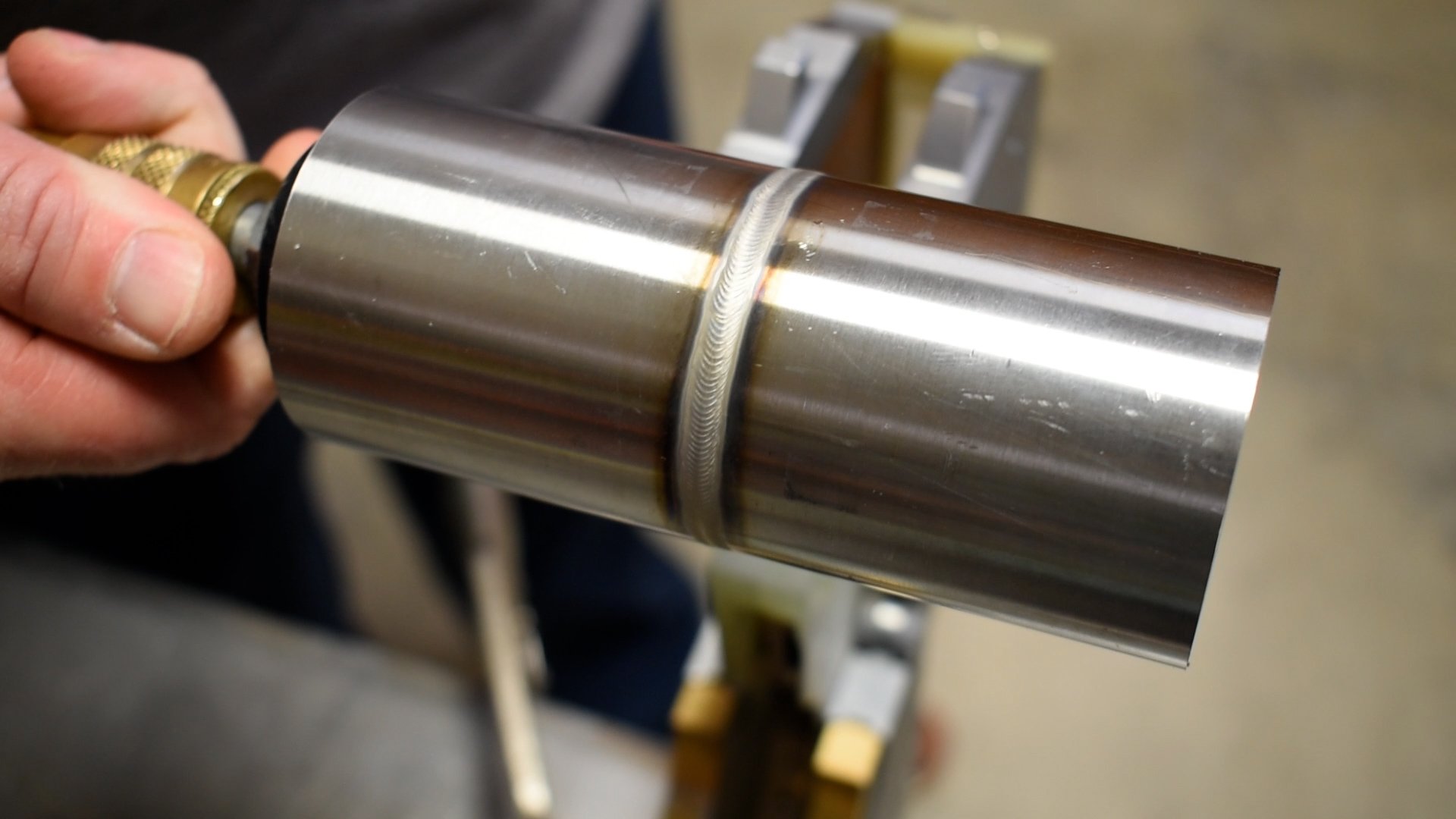Ultimate Guide to Preventing Weld Undercut: Tips and Techniques
Ultimate Guide to Preventing Weld Undercut: Tips and Techniques
Blog Article
Understanding the Causes and Solutions for Undercut Welding in Metal Construction Procedures
In the realm of steel manufacture processes, the occurrence of undercut welding presents a substantial difficulty that demands a comprehensive understanding of its causes and feasible remedies. The elaborate interaction of numerous elements during welding procedures can bring about this undesirable phenomenon, affecting the architectural integrity and general high quality of the welded joints - Preventing weld undercut. By studying the root triggers of undercut welding and checking out reliable restorative steps, producers can elevate the standard of their craftsmanship and guarantee the manufacturing of perfect metal parts
Typical Causes of Undercut Welding
Regularly neglected in metal construction, undercut welding occurs due to numerous factors that require thorough attention and knowledge to be successfully alleviated. In addition, inappropriate welding techniques, such as making use of the wrong welding angle or take a trip speed, can additionally contribute to damage formation. The option of welding parameters, such as voltage, present, and cable feed rate, plays a significant function in the occurrence of undercut welding.
Impact of Incorrect Welding Parameters
Incorrect welding specifications can significantly jeopardize the integrity and top quality of welded joints in metal manufacture procedures. The impact of wrong welding parameters manifests in numerous means, bring about structural weak points and issues in the bonded parts. One vital element impacted by incorrect welding parameters is the infiltration depth of the weld. Not enough warm input due to low welding currents or exceedingly high traveling rates can result in insufficient fusion in between the base metals, leading to insufficient joint infiltration and weakened bonds. Alternatively, extreme warmth input triggered by high welding currents or sluggish traveling rates can lead to burn-through and too much reinforcement, producing a weak and unsteady weld framework. Furthermore, inaccurate criteria such as incorrect voltage settings or wrong electrode angles can add to irregular weld bead profiles, absence of blend, and increased opportunities of flaws like damaging. Meticulous focus to welding parameters is paramount to make sure the manufacturing of high-quality welds with the preferred mechanical buildings and architectural honesty.
Result of Improper Torch Angle
Incorrect lantern angle in welding operations can considerably impact the high quality and integrity of the last weld joints in metal construction processes. Damaging is a common welding issue where a groove forms along the weld toe, compromising the joint and endangering its architectural integrity.
A lantern angle that is too steep can result in insufficient penetration, incomplete combination, and boosted spatter. On the various other hand, a torch angle that is as well shallow can cause extreme penetration, burn-through, and distortion of the base material. Preventing weld undercut. Correct lantern angle is essential for making certain regular weld high quality, stamina, and look
To protect against damaging and various other flaws created by incorrect torch angles, welders need to be educated to keep the proper torch angle throughout the welding procedure. Normal monitoring and adjustment of lantern angles during welding can aid accomplish audio welds with very little flaws.
Role of Inadequate Welding Strategies

Another facet of poor welding methods is incorrect weld prep work. Inadequate cleansing of the base steels, inaccurate joint layout, or useful link inadequate edge prep work can all contribute to damage welding. Additionally, inadequate shielding gas insurance coverage or making use of the wrong kind of gas can result in incomplete combination and the formation of undercut flaws.
To deal with the role of inadequate welding techniques in steel manufacture procedures, it is necessary to give thorough training for welders. Correct education on welding specifications, joint prep work, and securing gas option can assist avoid undercut welding and make sure premium welds in metal fabrication projects.
Effective Solutions for Undercut Welding
Attending to undercut welding in steel construction needs implementing reliable services to boost weld top quality look what i found and architectural honesty. Among the primary services to deal with undercut is to readjust welding specifications such as voltage, present, and travel speed to ensure proper warmth input and blend. By fine-tuning these settings, welders can protect against too much melting of the base steel and filler product, lowering the possibility of undercut development.
In addition, proper joint preparation is crucial in stopping undercut. Guaranteeing clean base metal surface areas without impurities and utilizing the suitable bevel angle can help advertise much better weld infiltration and decrease the risk of undercut - Preventing weld undercut. Utilizing appropriate welding strategies, such as weaving or oscillating the torch, can additionally aid in dispersing warm evenly and filling up the weld joint appropriately, decreasing the possibility of undercut problems
Moreover, choosing the right welding consumables, including electrodes and filler metals, is crucial in reducing undercut. Using materials with suitable chemical compositions and mechanical buildings can add to attaining sound welds with very little undercut. Routine examination and top quality control actions ought to also be applied to detect and attend to undercut concerns promptly, ensuring the total stability of fabricated metal elements.

Conclusion
In conclusion, comprehending the reasons and solutions for undercut welding in steel construction procedures is crucial for achieving high-quality welds. By dealing with common causes such as incorrect welding parameters, inappropriate lantern angle, and insufficient welding techniques, welders can protect against damaging and make certain solid, sturdy welds. It is necessary to take notice of these factors and execute effective remedies to boost the pop over to this web-site total welding procedure and end product quality.

Report this page